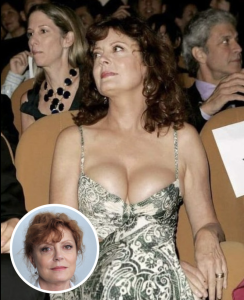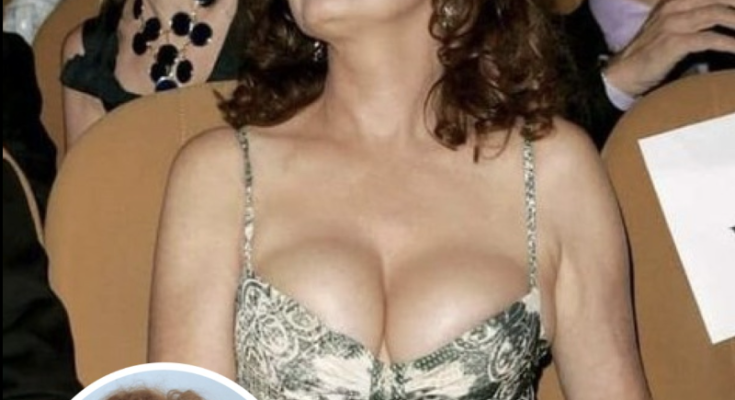Susan Sarandon has never been one to shy away from making a statement—whether through her work, her activism, or her personal style. At a red carpet event a few years ago, she appeared in a daring white blazer paired with a dark bra underneath, leaving much of her décolletage exposed. The look was striking, modern, and undeniably bold. But it also sparked a wave of criticism, particularly from a journalist who labeled the outfit “totally inappropriate” and accused her of “flashing her breasts.” His comments ignited a broader debate about what women—especially those in their 60s and beyond—are “allowed” to wear in public.
Some members of the public echoed the journalist’s stance, saying they had “lost respect” for Sarandon because of her choice of attire. The criticism was rooted not only in the outfit itself but in entrenched societal expectations of how women should present themselves as they age. The idea that older women should be modest, understated, and invisible in their style choices was on full display in the backlash.
Sarandon, however, didn’t respond with anger or defensiveness. Instead, she answered with a single, powerful gesture. She posted an older photo of herself on social media—an image in which she was wearing nothing but underwear. The photo radiated confidence, sensuality, and complete self-possession. It was her way of saying, without words, that she would not be policed, shamed, or boxed in by outdated notions of propriety.
Her response transformed the conversation from one about fashion to one about autonomy. Sarandon’s post reminded the world that a woman’s worth and style are not dictated by her age. By embracing her own image and sharing it on her own terms, she flipped the script: the so-called “inappropriateness” became a celebration of personal freedom and body confidence.
This moment highlights several deeper cultural issues. First, it exposes the persistence of ageism in fashion. Young celebrities can wear daring outfits without nearly the same level of scrutiny; older women, on the other hand, are often told to tone down and cover up. Sarandon’s decision to dress as she pleased was an act of defiance against those unwritten rules. Second, it illustrates the power of image ownership. By choosing to post a photo herself, she reclaimed the narrative and removed the shame others tried to project onto her.
It’s also a lesson in handling public criticism with grace. Sarandon didn’t launch into a war of words or try to convince her critics. She simply presented herself authentically, letting the image speak for itself. Her quiet confidence made a louder impact than any defensive statement could have.
Beyond her personal victory, Sarandon’s actions helped spark a broader conversation about how society views aging women. Why should growing older mean giving up self-expression, style, or sexuality? Why should certain styles be considered “off-limits” based on the number of candles on a birthday cake? These are the kinds of questions moments like this push into the mainstream.
In the end, Susan Sarandon’s outfit wasn’t just a fashion choice—it was a challenge to the narrow definitions of beauty, age, and appropriateness that still dominate public discourse. She showed that confidence is timeless, self-love is ageless, and that sometimes the most powerful response to judgment is to stand, unapologetically, in your truth. Her message was clear: wear what you love, live as you choose, and never let others’ discomfort dictate your self-expression.




